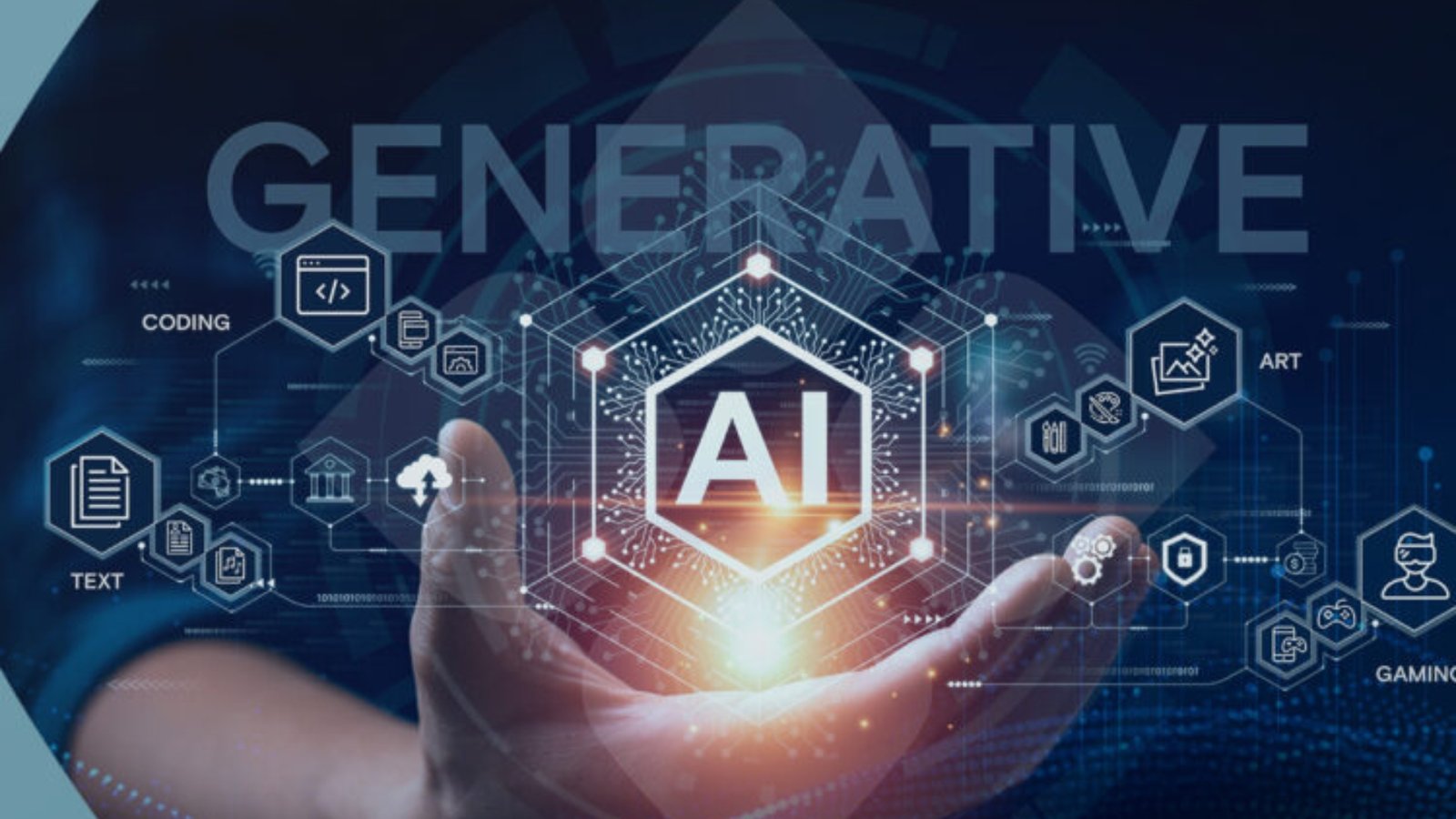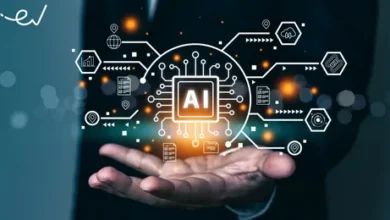
Generative AI Future One of the most striking developments in AI recently is generative AI. With the help of technologies like DALL-E, ChatGPT, and Stable Diffusion, generative AI has found many uses in many industries. But you have to remember that generative AI is still in its infancy.
Generative AI is an emerging field with the potential to revolutionize industries and society. With the help of AI tools, businesses might finish jobs that took weeks to complete in just days. Also, according to some reports, AI handles nearly 44% of customer service inquiries. However, concerns around bias, data privacy, and ethics in generative AI are growing. Around 81% of consumers would prefer that a person be involved in reviewing and validating the results of Generative AI Future.
The outlook for generative AI may seem bleak, given that only 37% of people believe in AI results. However, generative AI has been a go-to for firms looking to streamline consumer engagement. IDC’s projections show that worldwide spending on artificial intelligence will surge by over 27% in 2023. To assess the possibilities of generative AI, let’s dissect some of its most notable forecasts.
Top Predictions for the Generative AI Future
2023 would go down in history as a watershed moment for generative AI, as it finally became popular with the general public. Many anticipated shifts and developments in 2024 will reshape generative AI and its applications as the field advances. For instance, according to studies conducted by McKinsey, generative AI has the potential to boost the global economy by over $4.4 trillion annually. How durable will generative AI be? Here are a few critical forecasts if you want to know what’s coming up with generative AI.
Generative AI Becomes More Mainstream
The most significant forecast regarding AI’s future is that the Generative AI Future will become less popular. The field of generative AI has grown steadily since OpenAI’s ChatGPT was released, thanks to the constant release of new models. Remember that generative AI solutions’ foundational advanced machine learning algorithms have been in development for decades, but nobody noticed them until ChatGPT came up.
Generative AI has come a long way since its inception in late 2022. The truth is that new generative AI models are being released every month. The Generative AI Future field saw encouraging advancements in March 2023 with the introduction of solutions for customer relationship management and financial services support. By 2024, generative AI will have aged out of its miraculous status. Contrarily, it would progress quickly and approach users unimpeded.
Faster Progress towards Productivity
Generative AI Future: The goal of developing AI is to make machines as intelligent as humans. Therefore, generative AI forecasts should provide information on the likelihood of attaining human-like performance. According to McKinsey, by 2030, generative AI might match human performance.
Furthermore, the forecasts show that generative AI will perform as well as the top 25% of humans in specific activities by 2040. Hence, generative AI can enable technology to surpass human ability in specific jobs more rapidly than anticipated.
Automation of Work in Knowledge
The forecasts made regarding generative AI may brighten the future of knowledge automation. Enhancements to generative AI’s technological capabilities have the potential to significantly impact the work of artists, educators, and professionals. In the future, generative AI may be similar to how automation has changed various physical activities.
Knowledge as a whole stands to be profoundly affected by generative AI, especially in the areas of teamwork and judgment. Educators, artists, lawyers, and tech workers can anticipate increased automation in various facets of their employment in the near future. The potential of generative AI to foretell patterns in natural language would propel such advancements. Furthermore, generative AI has the potential to guarantee the ever-improving use of patterns in natural language.
Multimodal Generative AI
A terrifying forecast regarding AI’s future centres on multimodal generative AI. Various generative AI tools are available, each with its own features. The ability to write is just one example; other generative AI technologies can also produce, hear, see, and read. Generative AI is getting better and better at handling all these jobs simultaneously, like making pictures and text all at once. For instance, DALL-E 3 can produce top-notch text that may be embedded into its visuals.
Consequently, it would be superior and more potent than other image-generation technologies. So, according to the Generative AI Future, multimodal generative AI will be the standard. Generative AI might augment human creativity in real-time by exploring new avenues of expression.
Interactive AI
Once interactive AI becomes a reality, generative AI bots will soon be able to do jobs in addition to interacting with humans. Interactive AI bots can effectively assign critical tasks to other programs or humans, ensuring they are completed to the desired standard.
One needs only look at software development as an example to grasp the significance of interactive AI. Generative AI has been successfully used for both code generation and testing. Incorporating interactive features into generative AI can enable it to finish an app development project autonomously.
Generative AI Tools for Broader Use Cases
A wide variety of textual, auditory, visual, and graphical content forms have been successfully generated by generative AI technologies. Generative AI technologies are reliable enough to be relied upon by software engineers when they need code for new projects. Companies have been racing to create generative AI programs using all these fields’ potential benefits. Generative AI Future Interestingly, future forecasts from the field of generative AI indicate that this technology will need to go beyond enclosed environments. The development of industry-specific, use-case- and function-specific generative AI apps and tools is on the horizon. Also, the new applications and resources will probably be more valuable than the standard generative AI tools.
Specific Industries Would Reap More Benefits
Almost every primary industry’s corporate leaders are interested in generative AI. It is critical, however, to assess how generative AI affects corporate operations in various sectors. According to a McKinsey report, some sectors stand to gain more than others from generative AI.
The importance of company functions, the size of industry income, and the mix of business operations are some elements that would determine the impact of generative AI on an industry. Applying generative AI to marketing and sales processes would profoundly affect nearly every industry. However, the banking and high-tech industries stand to gain the most from generative AI’s ability to speed up software development.
Emphasis on Bridging the Skill Gap
Recognizing the need for skill development is crucial as firms in various industries set goals for generative AI. Therefore, organizational strategies for spotting talent with generative AI abilities will determine the future of Generative AI.
If generative AI technologies can bridge the talent gap, they will be able to provide early adopters with improved value. Businesses would thus engage in fierce competition to maintain their position as the leading providers of generative AI skills. Companies should enhance their talent management processes and provide competitive compensation and benefits to attract and retain generative AI specialists.
Impact of Generative AI on Global GDP
The Generative AI Future also includes its potential impact on global GDP, which is an essential factor to consider. According to McKinsey, Generative AI has the potential to improve worker productivity in several industries significantly. To make the most of these productivity gains, workers can switch to tasks that improve their output even more. Enhancing GDP development while guaranteeing inclusivity and sustainability could be achieved by supporting people in acquiring new skills and reshaping their jobs.
Challenges Expected in the Domain of Generative AI
Generative AI has the potential to revolutionize both business and people’s daily lives, as shown by its many advantages. Consider the difficulties you might encounter while working with generative AI, though. The usage of deepfakes is one of the main problems with generative AI.
The absence of means to distinguish deepfakes from accurate content has magnified the adverse effects of deepfake technology. The public’s poor perception of deepfakes is a significant obstacle to future AI and ML advancement. There are both short- and long-term effects of unethical deepfake technology use. The truth is that it will affect society in profound ways.
The emergence of rules and oversight presents generative AI with another significant obstacle. One potential use of Generative AI in the future is the development of autonomous and biological weapons and disseminating disinformation. Consequently, rules must be implemented to safeguard the planet and guarantee that generative AI will be used to improve civilization. In addition, professionals in the field need to focus on making generative AI models more transparent. Concurrently, robust frameworks, policies, and norms should be promoted to support the ethical application of AI.
Conclusion
The predictions for the Generative AI Future show how it might revolutionize many sectors of the economy and our way of life. As generative AI matures, it will surpass ChatGPT and other generic tools. Generative AI can revolutionize various industries by empowering businesses to develop cutting-edge apps and technologies tailored to individual needs.
However, generative AI may be more useful in specific sectors and certain business processes. Concurrently, it’s vital to consider generative AI’s obstacles, including deepfake technology, a lack of rules, and clarity around how generative AI models function.









